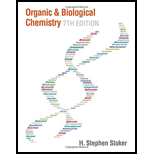
Concept explainers
Classify anabolism and catabolism as synthetic or degradative processes.
Interpretation: To classify anabolism and catabolism as a synthetic or degradative process.
Concept introduction: The sum of various chemical reactions occurring in the human body is called metabolism and the reactions individually are known as metabolic reactions. Metabolic reactions are of two types: catabolism and anabolism.
In catabolism, the metabolic reactions occur so that large biomolecules break down into smaller molecules with the release of energy. On the other hand in anabolism, the metabolic reactions occur so that the smaller molecules combine to form larger molecules with consumption of energy.
Synthetic process is the process in which the two or more molecules combine to form the final product of the process. In the degradative process, the large molecules break down into two or more smaller molecules.
Answer to Problem 12.1EP
Anabolism is classified as a synthetic process and catabolism as a degradative process.
Explanation of Solution
Anabolism is considered as a synthetic process because in both the processes the two or more smaller molecules combine and forms a larger molecule. On the other hand, catabolism is classified as a degradative process because both the processes involve the breakdown of the larger molecule into smaller molecules.
The process in which two or more molecules are joining is considered as a synthetic process, therefore, anabolism is a synthetic process and the process in which larger molecule break down into smaller ones is known as a degradative process, therefore, catabolism is a degradative process.
Want to see more full solutions like this?
Chapter 12 Solutions
Organic And Biological Chemistry
Additional Science Textbook Solutions
Organic Chemistry As a Second Language: Second Semester Topics
Organic Chemistry
Chemistry: Structure and Properties
Inorganic Chemistry
Introductory Chemistry (6th Edition)
 General, Organic, and Biological ChemistryChemistryISBN:9781285853918Author:H. Stephen StokerPublisher:Cengage Learning
General, Organic, and Biological ChemistryChemistryISBN:9781285853918Author:H. Stephen StokerPublisher:Cengage Learning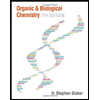 Organic And Biological ChemistryChemistryISBN:9781305081079Author:STOKER, H. Stephen (howard Stephen)Publisher:Cengage Learning,
Organic And Biological ChemistryChemistryISBN:9781305081079Author:STOKER, H. Stephen (howard Stephen)Publisher:Cengage Learning,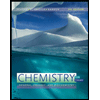 Chemistry for Today: General, Organic, and Bioche...ChemistryISBN:9781305960060Author:Spencer L. Seager, Michael R. Slabaugh, Maren S. HansenPublisher:Cengage Learning
Chemistry for Today: General, Organic, and Bioche...ChemistryISBN:9781305960060Author:Spencer L. Seager, Michael R. Slabaugh, Maren S. HansenPublisher:Cengage Learning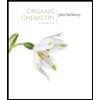
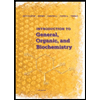 Introduction to General, Organic and BiochemistryChemistryISBN:9781285869759Author:Frederick A. Bettelheim, William H. Brown, Mary K. Campbell, Shawn O. Farrell, Omar TorresPublisher:Cengage LearningChemistry: Matter and ChangeChemistryISBN:9780078746376Author:Dinah Zike, Laurel Dingrando, Nicholas Hainen, Cheryl WistromPublisher:Glencoe/McGraw-Hill School Pub Co
Introduction to General, Organic and BiochemistryChemistryISBN:9781285869759Author:Frederick A. Bettelheim, William H. Brown, Mary K. Campbell, Shawn O. Farrell, Omar TorresPublisher:Cengage LearningChemistry: Matter and ChangeChemistryISBN:9780078746376Author:Dinah Zike, Laurel Dingrando, Nicholas Hainen, Cheryl WistromPublisher:Glencoe/McGraw-Hill School Pub Co





